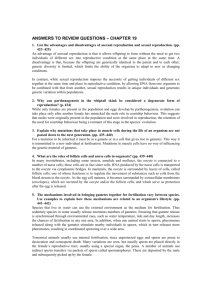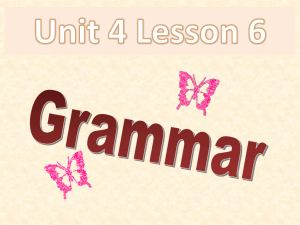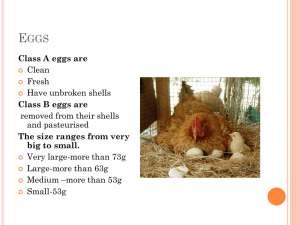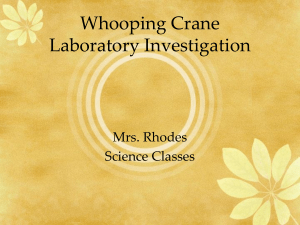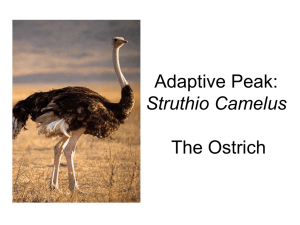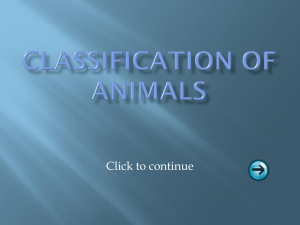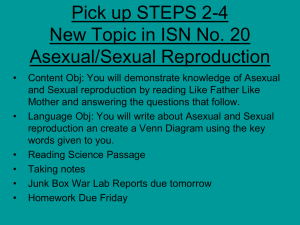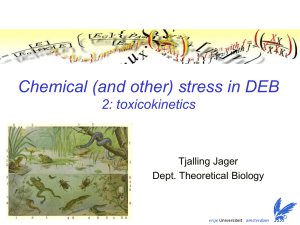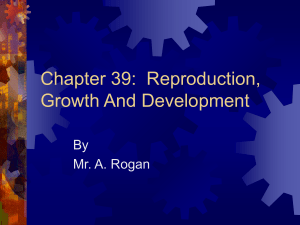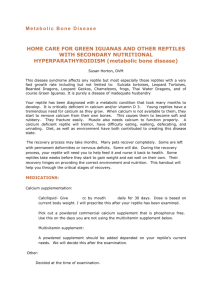Chapter 9 Review QuestionsFinal
advertisement
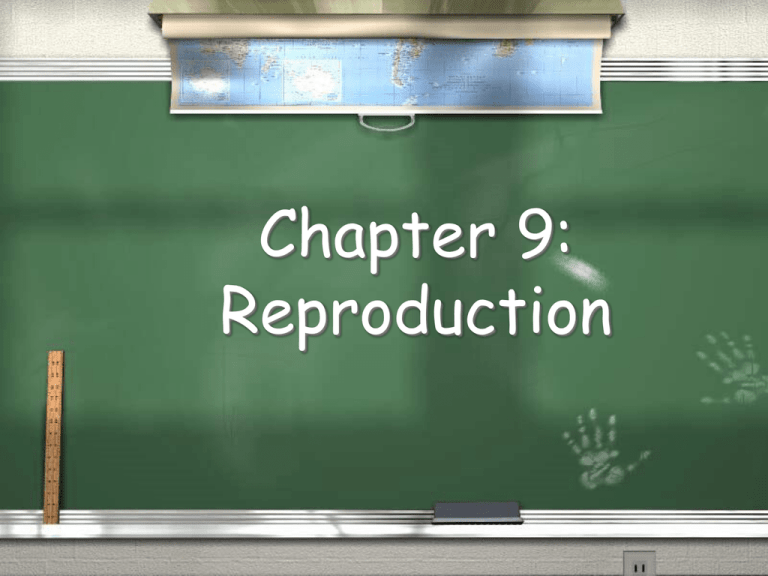
Chapter 9: Reproduction Section 9.1 Review page 320 Key Concepts 1. Name two forms of asexual reproduction. Give an example of an organism that undergoes each form. 1. Name two forms of asexual reproduction. Give an example of an organism that undergoes each form. Sample answers: • • • • binary fission - bacteria parthenogenesis - honeybees planaria - fragmentation plant cuttings - vegetative propagation 2. What is the main advantage of sexual reproduction? 2. What is the main advantage of sexual reproduction? Increased genetic variation 3. How are asexual and sexual reproduction similar? How do they differ? 3. How are asexual and sexual reproduction similar? How do they differ? Similar - produce new individuals; Different - number of parents, amounts of genetic variation Critical Thinking 4. Explain: What is fragmentation? Give a description of how it works. Explain: What is fragmentation? Give a description of how it works. 4. A complete new individual grows from a broken off piece of its parent. A planarian attaches its tail to a surface and pulls apart. Then each part grows into a complete organism. 5. Evaluate: If banana farmers began to breed bananas through sexual reproduction, would this make bananas completely resistant to disease? Explain your answer. 5. Evaluate: If banana farmers began to breed bananas through sexual reproduction, would this make bananas completely resistant to disease? Explain your answer. No, but it would increase genetic variation and thus increase the chance of resistance. Challenge 6. Synthesize: Amphibian eggs are soft and slimy. Reptile eggs have a tough leathery shell. Most amphibians lay their eggs in water. Many reptile eggs are laid in nests on dry ground. How are amphibian and reptile eggs each adapted to their own environments? 6. Synthesize: Amphibian eggs are soft and slimy. Reptile eggs have a tough leathery shell. Most amphibians lay their eggs in water. Many reptile eggs are laid in nests on dry ground. How are amphibian and reptile eggs each adapted to their own environments? • Reptile shell reduces water loss; Amphibian • No outer protection from water loss is needed • Sperm can fertilize eggs by swimming to them through the water. Section 9.2 Review page 329 Key Concepts 1. Name three ways plants can reproduce asexually? 1. Name three ways plants can reproduce asexually? • tubers • runners • rhizomes 2. What enables what plants reproduce even in dry conditions? 2. What enables what plants reproduce even in dry conditions? spores, pollens, and seeds 3. How are flowers related to seeds? to fruits? 3. How are flowers related to seeds? to fruits? Flowers have the male and female parts necessary to produce seeds and fruits. Critical Thinking 4. Evaluate: Why do many plants reproduce asexually when their environmental conditions are good? 4. Evaluate: Why do many plants reproduce asexually when their environmental conditions are good? Vegetative propagation is faster and more efficient. 5. Compare and Contrast: Use a Venn diagram to show the differences and similarities between gymnosperms and angiosperms. 5. . Compare and Contrast: Use a Venn diagram to show the differences and similarities between gymnosperms and angiosperms. gymnosperms - male and female cones seeds with winglike structures; angiosperms - flowers; seeds in fruit. similarities: vascular; both male and female structures; embryo inside a seed Challenge 6. Infer: In a tundra, most plants produce spores. In a rainforest, many plants produce flowers and fruit. What factors might play a role in shaping the plant life in each biome? 6. Infer: In a tundra, most plants produce spores. In a rainforest, many plants produce flowers and fruit. What factors might play a role in shaping the plant life in each biome? Sample Answer: A rain forest might have more animals to help pollinate flowers, while a tundra might have more wind. Section 9.3 Review page 340 Key Concepts 1. What are the specialized reproductive cells in males and in females? 1. What are the specialized reproductive cells in males and in females? sperm and egg 2. How does sexual intercourse result in pregnancy? 2. How does sexual intercourse result in pregnancy? Sperm enter vagina, swim through uterus and into fallopian tubes, fertilize a mature egg. 3. How are the placenta and the umbilical cord related? 3. How are the placenta and the umbilical cord related? Umbilical cord has blood vessels to and from placenta, where blood exchanges materials. Critical Thinking 4. Sequence: Describe the sequence of events between ovulation and menstruation. 4. Sequence: Describe the sequence of events between ovulation and menstruation. • After ovulation the egg enters the fallopian tube • The egg and the lining of the uterus break down and are expelled through the vagina. 5. Infer: Sperm cells have very little cytoplasm, while egg cells have a lot of cytoplasm. How do these different structures support the different functions of eggs and sperm? 5. Infer: Sperm cells have very little cytoplasm, while egg cells have a lot of cytoplasm. How do these different structures support the different functions of eggs and sperm? • Sperm cells are small and mobile. • The egg need not travel quickly but needs materials for many cell divisions. Challenge 6. Analyze: Children born to mothers who smoke during pregnancy have a higher rate of respiratory disease tan children born to nonsmoking mothers. Explain how a mother’s tobacco use could affect the fetus during development. 6. Analyze: Children born to mothers who smoke during pregnancy have a higher rate of respiratory disease than children born to nonsmoking mothers. Explain how a mother’s tobacco use could affect the fetus during development. • Chemicals pass from smoke through lungs, into the mother’s blood, through placenta to fetus. • These chemicals can increase heart rate.




